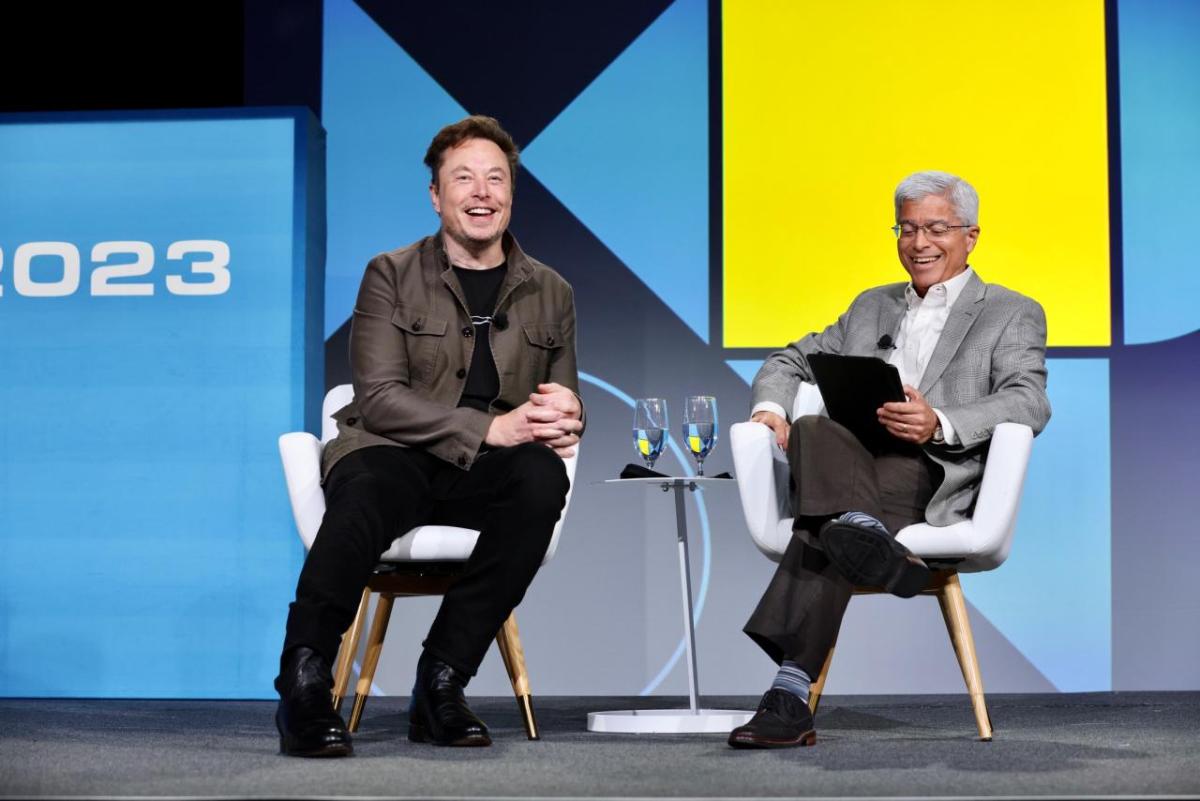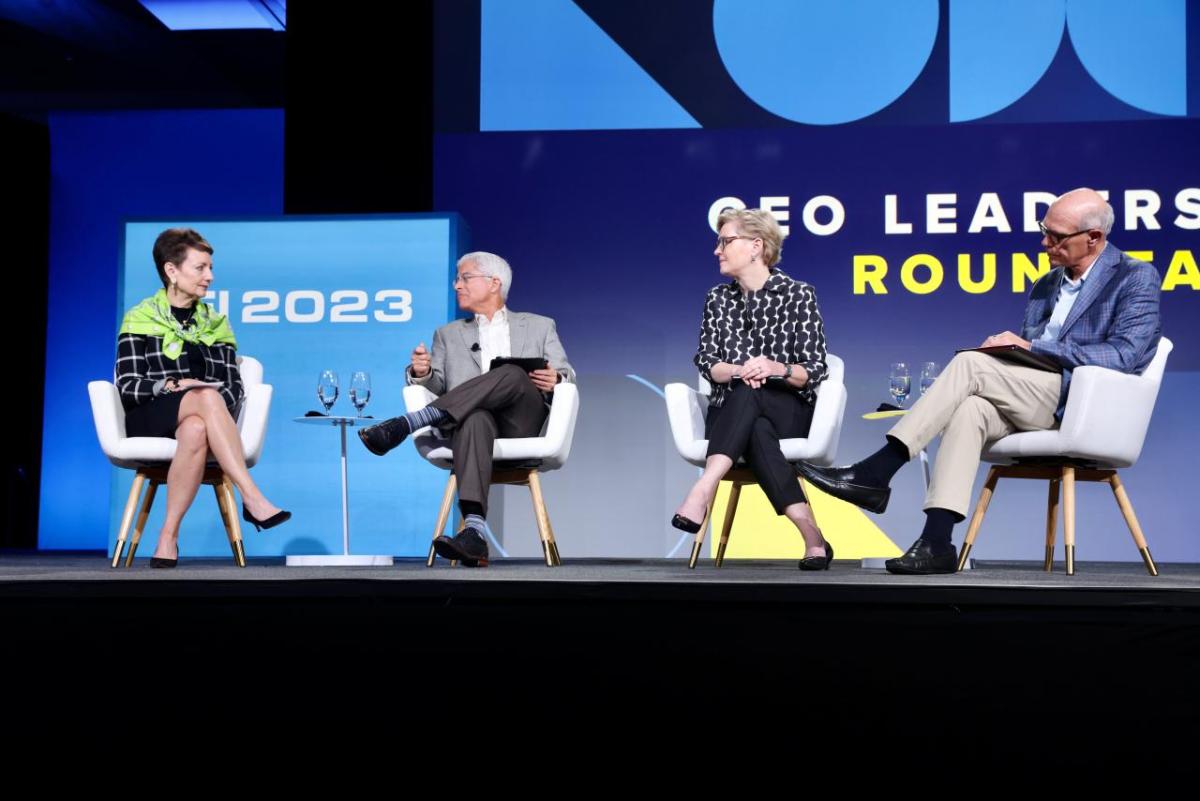Electrifying Dialogue on the Future of Clean Energy
Edison International President and CEO Pedro Pizarro and Elon Musk emphasize collaborative sustainability efforts to drive decarbonization at EEI Annual Meeting.
By Dan Minkoff
“I can’t emphasize enough: We need more electricity.”
That was a message Elon Musk delivered during his keynote conversation with Edison International President and CEO Pedro Pizarro at the Edison Electric Institute Annual Meeting in Austin, Texas, where the company he founded, Tesla, is building its new Gigafactory.
Pizarro was elected chair of EEI for 2023-24 during the annual meeting, and as EEI chair, Pizarro will lead the electric power industry’s efforts to accelerate progress toward net-zero carbon emissions. EEI represents U.S. and international investor-owned companies that provide electricity for more than 235 million people.
Increased demand for clean electricity is driven only partly by the explosive growth of Teslas and other electric vehicles. Musk made it clear during the 45-minute dialogue that he shares a similar view as EEI ― decarbonizing the economy is essential for the planet’s health. Pizarro asked Musk if there’s a common thread in his mission across all of his companies, including Tesla, SpaceX, The Boring Company, Twitter and Neuralink.
"The aspiration … is to maximize the probability that the future will be good for civilization,” Musk said.
When talking about recent announcements to open the Tesla Supercharger network to other auto manufacturers, he said, “I don’t know if it’s a good thing for Tesla or a bad thing. I think it’s morally right … If it’s something that will help advance sustainable energy, we’ll do it.”
Pizarro responded: “That’s a powerful commitment to sustainability.”
Musk, however, wants the industry to move faster while recognizing the challenges of building more electricity infrastructure.
“We’re just like Gulliver’s Travels, and each of those regulations by themselves may not be so bad, but you have 10,000 little strings holding the giant of America down from a regulatory standpoint,” he said.
Pizarro acknowledged the need for siting and permitting reform, saying, “That’s one problem we need to solve.”
Electrifying passenger cars and trucks is part of the solution. A clean energy future also requires electrifying medium- and heavy-duty transportation and industrial equipment, mitigating and adapting to a changing climate, extending and hardening the grid to make it more resilient, reliable and ready for growing customer needs, improving physical safety, cybersecurity and more. All of that needs to happen while keeping electricity affordable.
Pizarro discussed those issues with Immediate Past EEI Chair Warner Baxter and EEI Vice Chair Maria Pope during a CEO leadership panel moderated by Lynn Good, chair, president and CEO of Duke Energy. They highlighted recent progress with the passage of the Infrastructure Investment and Jobs Act (IIJA) and Inflation Reduction Act (IRA). They also touched on additional policies and investments needed to support economywide electrification and the importance of engaging regulators and customers to expedite investments.
One area Pizarro focused on is the process of building out electricity transmission.
“We have great partners in the administration today and in Congress,” he said during the CEO panel. “All of them acknowledge that all of the wonderful work that’s been done in the last 18 months will be for naught if we can’t get steel in the ground. So, getting permitting and siting reform continues to be on my agenda.”
The EEI Annual Meeting also included featured sessions with Bill Gates, best known as Microsoft's co-founder, U.S. Secretary of Energy Jennifer Granholm and Senior Advisor to the President for Clean Energy Innovation John Podesta.
Baxter, executive chairman of St. Louis-based Ameren Corporation, hosted the conversation with Gates, whose latest focus is supporting energy innovation through his company, Breakthrough Energy. Gates said the clean energy transition is the hardest thing humans have ever done.
“The idea that we have this [net-zero] goal [in the U.S.] by 2050, that we’ll replace all those steel plants, cement plants, coal plants ― there’s no equivalent thing,” Gates said. “The number of pieces that must be coordinated to make this work, including designing a whole new green grid, is incredibly complex.”
Nevertheless, Gates has a positive outlook.
“[In] any area of emissions [reduction], we now see the path to get there,” he said. “The execution is daunting, but there’s a path to get there.”
Gates later added, “Electrification is what it’s all about.”
Pope, president and CEO of Portland General Electric, led a conversation with Granholm and Podesta about federal support for the clean energy transition, including funding from the IIJA, IRA and ensuring a just transition, particularly for underserved communities.
For the next year, Pizarro will be a leading voice for the electric power industry as EEI advocates for many of the issues discussed with Musk, Gates, Granholm and Podesta.
“I look forward to supporting the electric power industry’s investments of more than $130 billion each year to extend and harden the grid,” Pizarro said. “We have a lot of hard work ahead. The commitment from electric companies, plus interest and innovation from entrepreneurs like Elon Musk, Bill Gates and others, makes me optimistic about the future. Decarbonizing all sectors of the economy may be one of the difficult things we must do, yet it also might be the most important for the future health and safety of our planet.”
For more information, visit eei.org.




